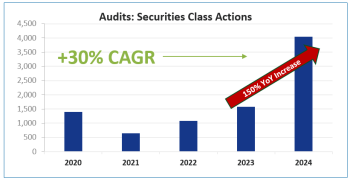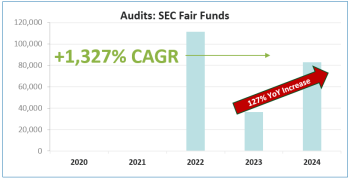[Session Recap] Navigating 3 of Today’s Biggest Class Action Pain Points
Learn how investors are improving claim survival rates and recovery results with automated workflows.
A successful securities class action recovery program has long demanded specialized expertise, sufficient resources, and operational diligence.
Today, changing filing requirements and greater scrutiny of shareholder claims have made filing and recovery even more complex, as claim administrators face pressure to prevent fraud and process settlements efficiently. As a result, documentation audits, claim deficiencies, and maintaining visibility into the full lifecycle of a filed claim are some of the key recovery challenges investors see in the market today.
To navigate this rising tide of operational friction, investors need the right combination of people, process, and technology so they can 1) solve routine issues with automated workflows, and 2) proactively flag non-standard issues for manual intervention. And that’s exactly what FRT’s Bill Kidder (COO), Malav Mehta (VP, Product Management, and Allison McGrath (VP, Client Success) discussed during our recent live session on Addressing Operational Friction in Your Class Action Program.
Keep reading for a few key takeaways from our in-house operations team. For additional color, investors can watch the full recording here.
Managing Documentation Audits


Increasingly, claims administrators require shareholders to provide independent documentation (e.g., bank and broker statements) that substantiates transaction activity provided in their filed claims.
In typical securities class actions, higher-value claims are more likely to be audited. This raises the financial stakes of addressing these requests quickly and effectively, given the often-large volume of submissions that administrators must review in a timely manner. SEC Fair Funds present an even greater hurdle for investors, as these enforcement actions require full documentation of all claims in order to receive payment.
The two charts on the right track the number of documentation audits our teams have managed in each recovery category, illustrating the dramatic growth we’ve seen with respect to claim scrutiny. In response, FRT has invested in automated processes and creative solutions for managing these requests, discussed in more detail during the session. This gives our clients more time to respond (less operational burden) and reduces the risk of rejected claims (increased recoveries).
Preventing Claim Rejections

Administrators can deem claims deficient for a variety of reasons, including:
- Ineligible securities (i.e., not covered under the settlement terms)
- A determination of zero recognized loss
- Missing TINs or account information
Addressing these issues when they arise is critical, as they determine claim survival and recovery amounts. At FRT, however, we adhere to the slogan that “the best deficiency is one that never happens.”
Our operating model features robust checks and balances throughout the case lifecycle, from capturing case and client data through the eligibility, loss calculation, filing, and remittance stages of the recovery lifecycle. As we explain in the session, automated workflows built for the class action process enable:
- Intelligent escalation of deficiencies that can be challenged and corrected as they occur
- Active identification and prevention of deficiencies at the source (i.e., shareholder data)
Recovery Program Oversight
Maintaining an effective class action program today means tracking and understanding where filed claims stand in the recovery lifecycle. Investment operations teams need a way to monitor results and support their governance objectives, balanced against their many other day-to-day responsibilities.
Transparency is a core benefit for FRT clients. Our platform provides a single book of record for shareholder recovery that is purpose-built for the class action filing process, with case-specific insights, board-level reporting, and automated alerts tailored to a firm’s needs.
Without this, it would be difficult for either internal (filer) or external (client) teams to understand where they stand with ongoing recovery opportunities, and how they change over the course of a case lifecycle that spans multiple years.
Join the Discussion
How investors manage their class action programs matters more today than ever before. For more insights into the tactics our clients use to improve claim survival rates and recovery results, complete the form in the sidebar to request a copy of FRT’s session recording.




